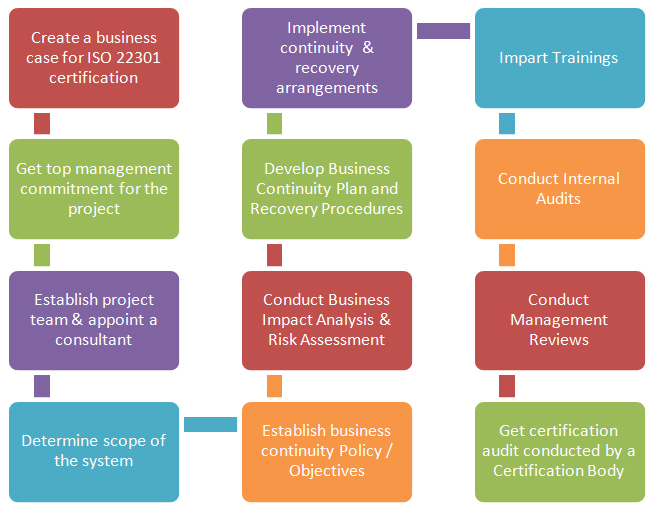Benefits
The benefits that an organization may get out of the application of ISO 22301 and its certification are mostly based on the management’s intentions of selecting this standard. However, following examples provide some direction about what the ISO 22301 can give the organizations in terms of its benefits
“It is our practice to understand the benefits that our customers want by applying ISO 22301 and then design the system in a way to help the organization to realize these benefits”.
An ISO 22301 certified organization is considered to be more reliable than the other similar organizations that are not certified. The certification is globally accepted and is gained by large as well as small organizations hence bring an equality in terms its positioning of brand reliability per say. The certification adds up to the brand recognition.
Interested parties of an organization include its customers, owners, employees, suppliers, bankers, etc. All these have certain expectations in terms of the continuity of the organization. Due to the improved availability of the processes and controls for reacting to business disruptions, after application of ISO 22301 based business continuity management system, the organization long term existence becomes more and more ensured. As a result the trust level and confidence of all these interested parties get a boost.
A business continuity management system built around ISO 22301 demands active involvement and participation of people. Involving people at all levels improves the team spirit and boosts internal cohesiveness of the organization.
Due to the readiness of the organization to react to any kind of business disruption or emergency situation, the organization is able to deal with such incidents effectively and thus prevents any damage to the reputation of the organization.
Any business disruption may bring up expenditure or losses that are resulting out of the impact of the incident. An effectively designed business continuity framework will help an organization to prevent such losses by reacting systematically to such incidents.


